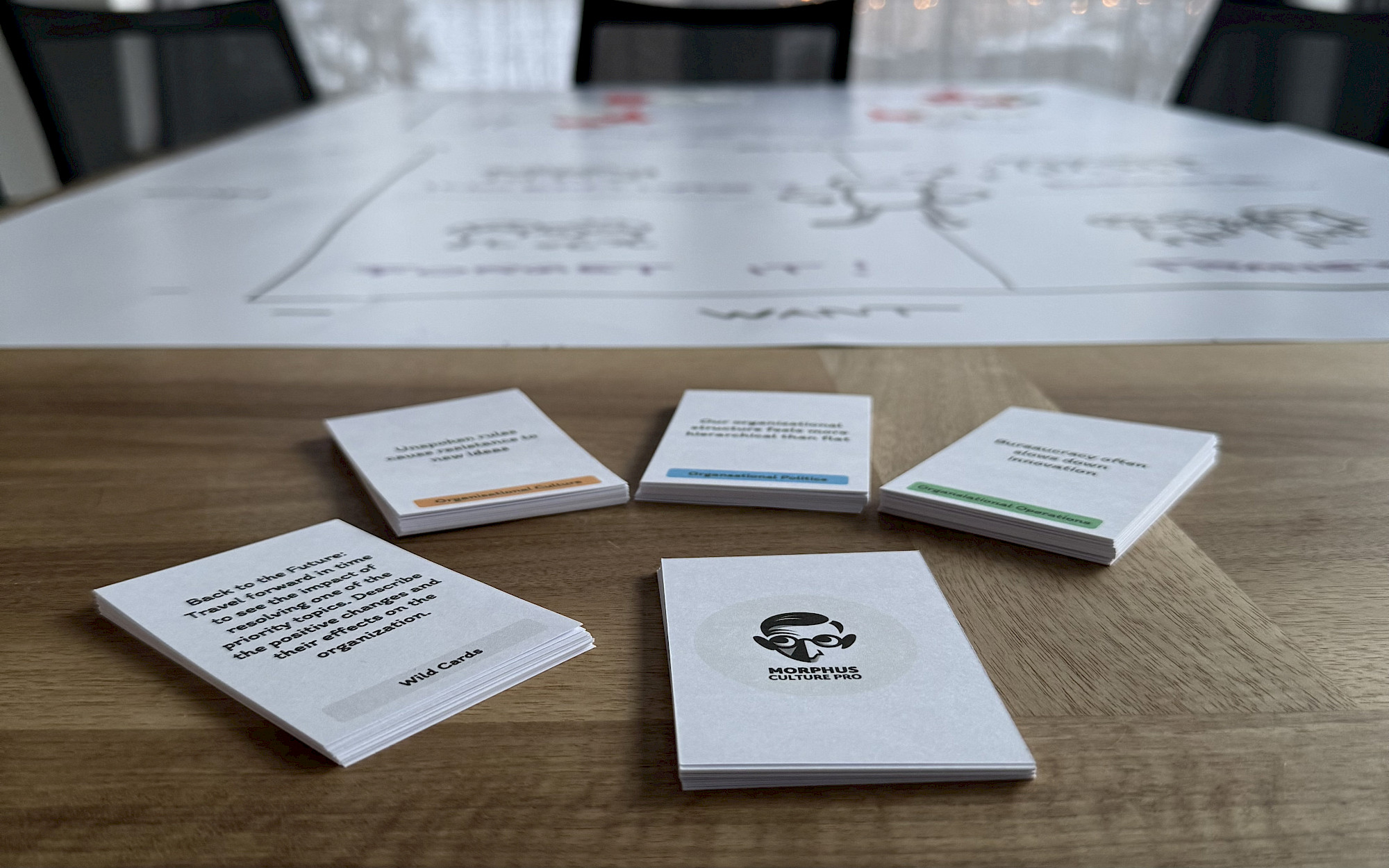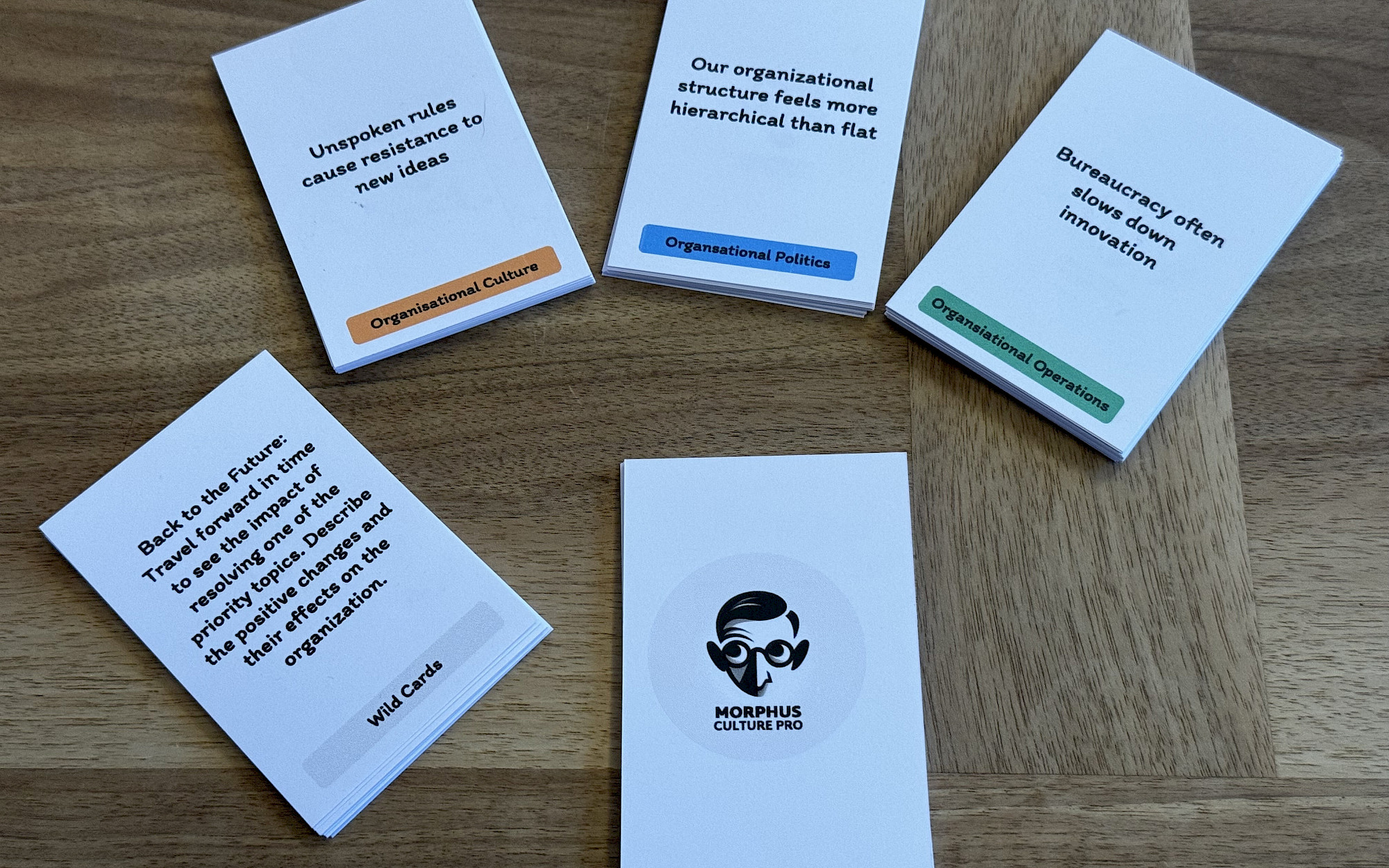The method takes a comprehensive approach to identifying and assessing various facets of an organization in terms of «how things get done around here», including its core values, beliefs, communication and collaboration dynamics, as well as leadership and management processes.
This cross-functional workshop encourages participants to collaboratively map organizational weaknesses, strengths and untapped potential in order to gain an accurate understanding of the company's guiding principles and organizational culture.
Pre-Workshop Discussion
Based on the preliminary discussion with the client, 20 suitable statement cards are pre-selected from the existing set of cards, including customized cards.
The cards are color-coded: orange for organizational culture (rituals, beliefs, values, mindset, patterns); blue for guiding principles of organizational politics (decision-making, power, influence, leadership, incentives); green for guiding principles of operations (coordination and organisational design).
1. Game Introduction and Breakout Session (45’)
In cross-functional groups of 3 to 5 individuals, participants assess and map 12 of the 20 statement/personal cards on the «Change-Map» along two axes:
Ability to change vs Willingness to change.The color coding of the cards and the quadrant-clusters indicate at an early stage, which areas (performance, innovation, transformation) and which organizational dimensions (political, cultural or strategic dimension) need particular attention.
Each participant has the opportunity to add one additional blank card and introduce a personal issue that will be mapped without immediate discussion.Next step is to select 3 to 5 focus topics. The group agrees on a concise title for each focus topic.
2. Co-creating a shared understanding: Plenary Session (45’)
Each group presents their «Change-Map» with selected focus topics. These are collectively assessed and clustered on the «Action-Map» along the following two axes:
Importance&Impact vs Urgency to Act.By now, patterns of collaboration, guiding principles for decision-making, power structures and influence, incentives, dilemmas, beliefs and mindsets will have emerged from the discussions.
3. Breakout in groups of 2 and «Go wild» (15’)
Each participant draws a «Wild card»
Prepare/rehearse the instructions on the cards for presentation in the plenary – in pairs or individually.BREAK (15’)
4. Building organizational narratives: Presentation of the «Wild cards» (60’)
Organizational narratives and underlying team dynamics are further explored after each presentation.
5. Conclusions and Wrap-up (45’)
Reflect on the insights gained during the session.
Highlight the commitment to address the selected topics and outline next steps, which may include stakeholder mapping, leadership and team commitment, resource allocation and additional follow-up sessions as needed.
Facilitator – if the group exceeds 10 participants a second facilitator is required
Participants
20 color-coded «Statement Cards»: organizational culture (orange); guiding principles for organisational politics (blue); guiding principles for organisational operations (green)
1 «Blank Card» per participant
5 - 20 «Wild Cards» depending on the number of participants
1 - 4 game tables with one A0 «Change-Map» poster per table
1 x A0 «Action» poster on the wall
Sticky notes
Thick markers
Timer
Stock of 160g/m2 A4 paper for customized and blank cards before each workshop




